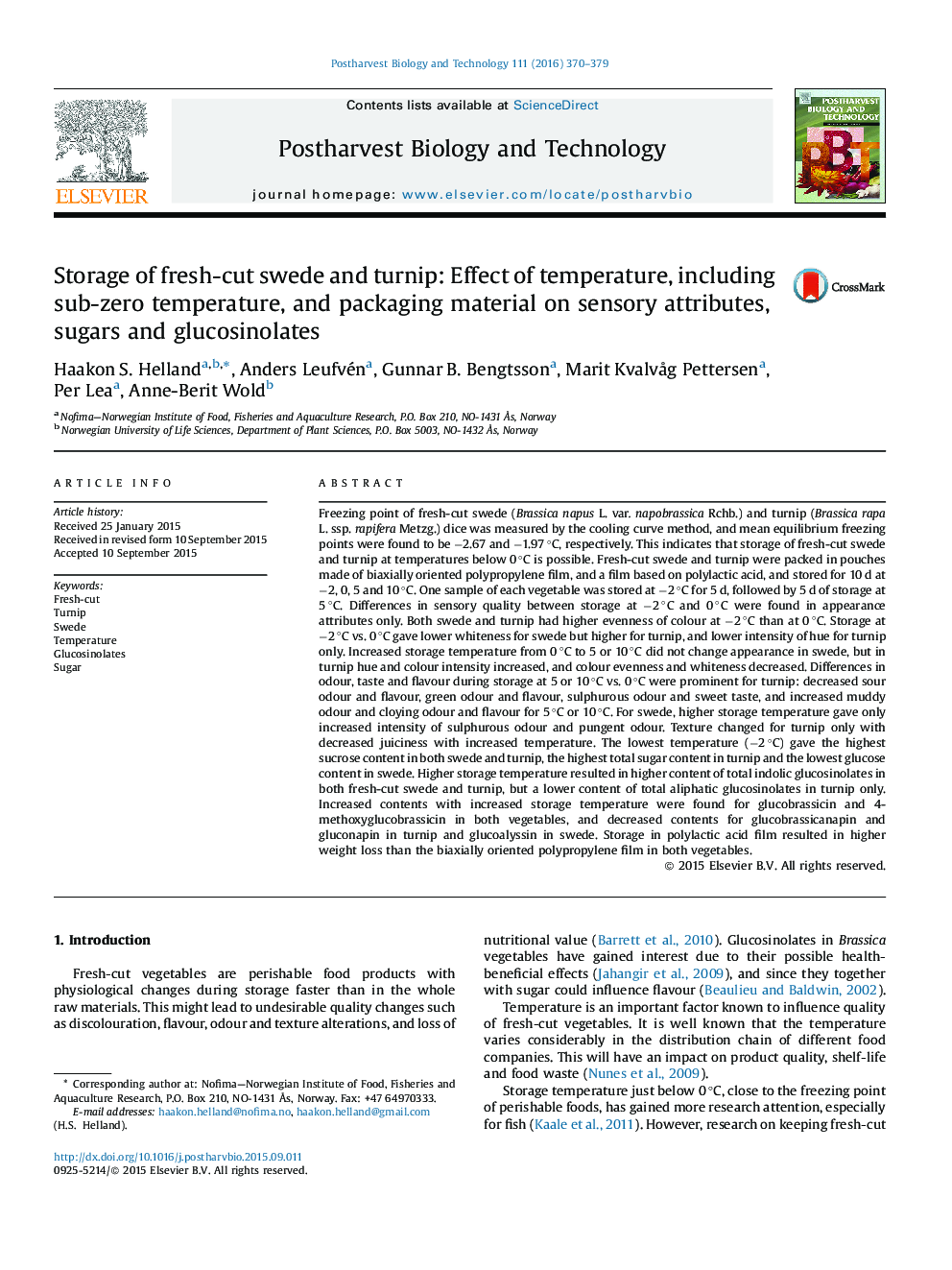| کد مقاله | کد نشریه | سال انتشار | مقاله انگلیسی | نسخه تمام متن |
|---|---|---|---|---|
| 4517893 | 1624983 | 2016 | 10 صفحه PDF | دانلود رایگان |
• Indications that fresh-cut swede and turnip could be stored at sub-zero temperatures.
• Effect of storage at -2°C and 0°C were related to appearance.
• Sucrose content was better kept at low temperature storage.
• Higher storage temperature gave higher content of indolic glucosinolates.
Freezing point of fresh-cut swede (Brassica napus L. var. napobrassica Rchb.) and turnip (Brassica rapa L. ssp. rapifera Metzg.) dice was measured by the cooling curve method, and mean equilibrium freezing points were found to be −2.67 and −1.97 °C, respectively. This indicates that storage of fresh-cut swede and turnip at temperatures below 0 °C is possible. Fresh-cut swede and turnip were packed in pouches made of biaxially oriented polypropylene film, and a film based on polylactic acid, and stored for 10 d at −2, 0, 5 and 10 °C. One sample of each vegetable was stored at −2 °C for 5 d, followed by 5 d of storage at 5 °C. Differences in sensory quality between storage at −2 °C and 0 °C were found in appearance attributes only. Both swede and turnip had higher evenness of colour at −2 °C than at 0 °C. Storage at −2 °C vs. 0 °C gave lower whiteness for swede but higher for turnip, and lower intensity of hue for turnip only. Increased storage temperature from 0 °C to 5 or 10 °C did not change appearance in swede, but in turnip hue and colour intensity increased, and colour evenness and whiteness decreased. Differences in odour, taste and flavour during storage at 5 or 10 °C vs. 0 °C were prominent for turnip: decreased sour odour and flavour, green odour and flavour, sulphurous odour and sweet taste, and increased muddy odour and cloying odour and flavour for 5 °C or 10 °C. For swede, higher storage temperature gave only increased intensity of sulphurous odour and pungent odour. Texture changed for turnip only with decreased juiciness with increased temperature. The lowest temperature (−2 °C) gave the highest sucrose content in both swede and turnip, the highest total sugar content in turnip and the lowest glucose content in swede. Higher storage temperature resulted in higher content of total indolic glucosinolates in both fresh-cut swede and turnip, but a lower content of total aliphatic glucosinolates in turnip only. Increased contents with increased storage temperature were found for glucobrassicin and 4-methoxyglucobrassicin in both vegetables, and decreased contents for glucobrassicanapin and gluconapin in turnip and glucoalyssin in swede. Storage in polylactic acid film resulted in higher weight loss than the biaxially oriented polypropylene film in both vegetables.
Journal: Postharvest Biology and Technology - Volume 111, January 2016, Pages 370–379
